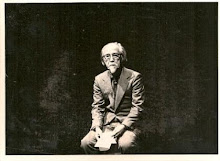The ability to breath life into the inanimate is a power that special effects wizards have strived to achieve since the start of the film industry. Whereas today's wizards create using mostly digital material the technicians of the 1930's just had metal, rubber, and paint to use to create the creatures that populated their movie screens.
The most important single individual of the King Kong special effects team would be Willis O'Brien who took all his energy and directed it to perfecting the art of stop-motion animation. He began not in films though but as a sculptor; chipping away at marble til the Edison Company called upon him to utilize his skills into making several short dinosaur pictures. Although his characters were crude and made mostly of clay audiences were instantly enthralled by his three dimensional creations and he quickly carved a place for himself in the industry.
Stop-motion animation's next great innovator would be Marcel Delgado, a sculptor, who split his time between a convenience store that he worked at and art classes at the Otis Arts Institute. While in art school he caught the attention of Willis O'Brien who was dazzled by Delgado's work. O'Brien quickly offered Delgado a job and a salary that was four times as much as he made working at the convenience store, but Delgado refused. Delgado's goal was not to work in the movies, but rather to be an artist. It was only after O'Brien gave him a tour of the studio and showed Delgado the workshop where he could sculpt, create, and experiment that Delgado finally relented and accepted the job.
What Marcel Delgado brought to the Willis O'Brien special effects team was that he replaced the clay models O'Brien had been using with more intricate life-like models. Delgado accomplished this by first building an intricate metal skeleton of the model which he then wrapped with foam rubber to create the musculature and finally bound it together in a latex skin. Delgado's creations were easier to move while shooting and looked more believable.


It would be more appropriate to call Merian C. Cooper and Ernest B. Schoedsack adventurers rather than movie directors. Merian Cooper spent a good chunk of his life flying in bomber planes and maneuvering through enemy air space, and his movies themselves incorporate planes, aerial shots, or deal with flight in some capacity. Both men first met each other as soldiers right after the first World War and eventually worked for Paramount Pictures as a directing team.
What Cooper and Schoedsack brought to theaters were movies which blended on-location footage with staged sequences. Cooper craved danger and didn't think it unusual to put himself in the middle of an elephant stampede just so he could capture it on film. Both men took their love of adventure and combined it with the technical innovations that they themselves spurred on with their story ideas and created films that still excite audiences.


For all of it's spectacle King Kong tells quite a simple story about Carl Denham, played by Robert Armstrong, who is looking for an interesting subject for his next movie, he gathers a crew and an actress, played by Fay Wray, and sets off for adventure. The entire film can be seen as a dissection of Merian Cooper. Denham like Cooper is an adventurer that carries his camera everywhere with him. Both men are willing to put life and limb in danger to capture something never before seen in their cameras. And just like Cooper neither had any patience to deal with women.
Denham is driven by a singular goal of capturing Kong on film. He achieves his goal at the cost of several lives. Carl Denham is a man who has not quite grown up, he lives for danger and whoever is left standing is stuck with the task of cleaning up his messes. In the film it is not Kong who is the monster, but rather Denham. Kong does his share of damage, but he is motivated by his affection for Ann, Fay Wray's character. His affection for her makes him more human than Denham who thirsts just for something to capture in his movie camera.


The story of Kong can also be seen as a story of death. The wild tropical jungle which is inhabited by creatures from prehistory live in peace till the intrusion of human beings. Their very presence undoes the balance. And when Kong is transplanted to New York he must adapt to an urban jungle where man is at the top of the food chain. While the jungle is populated by beasts of all shapes and sizes that can kill a man in all sorts of gruesome ways, it is the city which kills Kong. The antiseptic environment of the urban jungle with it's concrete and steel infrastructure brought on by man's industrial revolution is what does Kong in. The monster in this film is not the furry beast Kong but the world of man which steam rolls through the land till the earth is paved for further civilizing.




No comments:
Post a Comment